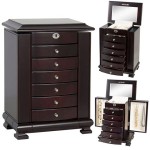How To Keep Food Warm Without Overcooking: Essential Aspects
Ensuring the warmth of food while preserving its quality is crucial for optimal dining experiences and food safety. To master the art of keeping food warm without overcooking, it is imperative to comprehend the fundamental aspects that govern this delicate process.
This article delves into the essential aspects of keeping food warm without overcooking, providing an in-depth exploration of various techniques and their implications. By understanding these key concepts, you can elevate your culinary skills and consistently serve warm, delectable dishes that delight your taste buds.
### Temperature Control: Striking a Delicate BalanceTemperature control is paramount in preventing overcooking while keeping food warm. The ideal temperature range for holding food safely and retaining its quality falls between 140°F (60°C) and 165°F (74°C). Maintaining this range ensures food remains at a safe temperature to prevent bacterial growth while avoiding excessive heat that can lead to overcooking.
### Insulation: Preserving Warmth Without CompromiseInsulation plays a vital role in preventing heat loss and maintaining the desired temperature of food. Effective insulation techniques include:
- Using insulated food containers or coolers.
- Wrapping food in aluminum foil or insulated blankets.
- Placing food in a warm oven with the heat turned off.
Time is a crucial factor in keeping food warm without overcooking. Prolonged exposure to heat can lead to overcooking and a loss of flavor and texture. To prevent this, it is essential to limit the time food spends in a warm holding environment.
- Plan meal preparation accordingly, keeping hot dishes at the desired temperature for no longer than 1-2 hours.
- If holding food for an extended period, periodically check its temperature and adjust the heat source as necessary.
Direct heat can quickly lead to overcooking, especially for delicate dishes or those with a high moisture content. Indirect heat transfer methods are preferred for preserving food without overcooking. Techniques include:
- Using double boilers or bain-maries.
- Placing food in sealed containers submerged in warm water.
- Transferring hot food to preheated serving platters or bowls.
Resting food before serving allows internal temperatures to equalize, resulting in a more evenly cooked dish. For meat, resting allows juices to redistribute throughout the meat, resulting in a tender and juicy end product.
- Remove hot food from the heat source and let it rest, covered, for a few minutes before serving.
- This allows the residual heat to continue cooking the food gently, preventing overcooking and ensuring an optimal eating experience.
Keeping food warm without overcooking requires constant monitoring and adjustments. Regularly check the temperature of the food and make adjustments to the heat source as necessary.
- Use a food thermometer to ensure the food remains within the safe temperature range.
- If the food is getting too hot, reduce the heat or move it further away from the heat source.
- If the food is cooling down too quickly, increase the heat or insulate it more effectively.
Mastering the art of keeping food warm without overcooking involves a delicate balance of temperature control, insulation, time management, indirect heat transfer, resting, and monitoring. By understanding and applying these essential aspects, you can elevate your culinary skills and consistently serve warm, delectable dishes that delight your taste buds and leave a lasting impression on your guests.

10 Ways To Keep Food Warm At Your Next Party Aleka S Get Together

10 Ways To Keep Food Warm At Your Next Party Aleka S Get Together

How To Keep Food Warm For Hours Before Serving With No Quality Loss

How To Keep Food Warm Without Electricity In 2024

3 Ways To Keep Food Warm At A Party Wikihow

How To Keep Food Warm Without Electricity In 2024

How To Keep Food Warm In An Oven Without Over Cooking My Budget Recipes

3 Ways To Keep Food Warm At A Party Wikihow

What Is The Recommended Temperature To Keep Food Warm Thermopro

How To Keep Food Warm Without Electricity In 2024








